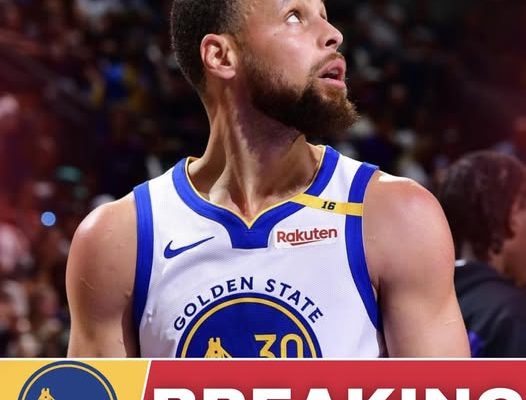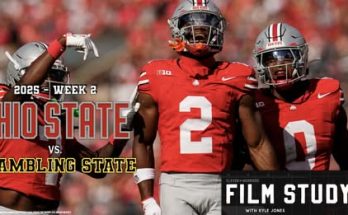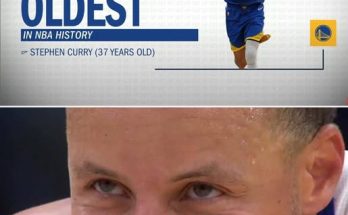In a historic move that is certain to alter the way the NBA is played and perceived, the league has officially implemented a new rule stating that missed half-court heaves at the end of quarters will no longer negatively affect a player’s statistics. This groundbreaking change, which was announced earlier today, is already generating substantial discussion among players, coaches, analysts, and fans alike. The rule comes after years of debate surrounding the fairness of penalizing players for what is largely a low-percentage shot in high-pressure, last-second scenarios. By removing the statistical penalty, the NBA is acknowledging both the entertainment value and the inherent difficulty of these long-distance attempts, which have become iconic moments in the modern game.
For decades, missed shots have impacted a player’s field goal percentage, affecting their overall efficiency metrics, potential contract negotiations, and sometimes even their legacy. However, missed heaves from beyond half-court are a different beast entirely. They are attempts taken in the final seconds of a quarter, often with little to no time left on the clock, designed more for crowd excitement or momentum than actual scoring efficiency. Historically, these shots would register as a miss, thereby lowering a player’s shooting percentage and, in some cases, affecting advanced metrics like true shooting percentage or player efficiency rating. With this rule change, those negative consequences are officially eliminated, providing players with the freedom to attempt such shots without worrying about statistical repercussions.
The NBA’s decision stems from a desire to prioritize the excitement and creativity of the game while also ensuring fairness for the players. League officials noted that many players felt pressure to avoid these attempts in fear of hurting their personal statistics, which can have a tangible impact on endorsements, contract negotiations, and career evaluations. By eliminating the penalty, the league is empowering athletes to take risks that enhance the entertainment value of the game. Players like LeBron James, Stephen Curry, and Damian Lillard, all of whom are known for their ability to hit long-distance buzzer-beaters, are likely to welcome this change wholeheartedly. It is expected to increase the frequency of highlight-reel attempts, giving fans even more jaw-dropping moments to enjoy.
Analysts suggest that the move could also alter end-of-quarter strategies. Previously, teams might have been more conservative with possessions in the final seconds, opting for higher-percentage shots rather than attempting improbable heaves. With the new rule in place, coaches may be more inclined to allow players to take these half-court attempts, knowing that a miss will not negatively impact shooting percentages or efficiency stats. This could lead to more dynamic and unpredictable endings to each quarter, increasing the drama and excitement for viewers. It is also possible that some players may develop specialized techniques for end-of-quarter heaves, turning what was once a low-percentage desperation shot into a more calculated and practiced skill.
From a statistical standpoint, the rule has sparked debate among analysts and statisticians. On one hand, removing the penalty makes sense in the context of fairness, as these shots are taken under extreme time pressure and with little expectation of success. On the other hand, it introduces new questions about how shooting percentages should be interpreted moving forward. For example, if a player misses multiple half-court heaves in a game, their field goal percentage will no longer reflect those attempts, which could slightly inflate their efficiency metrics. Critics argue that this could lead to misleading comparisons with players from previous eras or even with teammates who take similar shots but under different circumstances. Nevertheless, the NBA has made it clear that the entertainment value and fairness to players outweigh these concerns.
Players themselves have been quick to react to the news. Many have taken to social media to express their excitement and relief, highlighting how this change validates the risk-taking nature of the sport. Some have joked that they can now “shoot from anywhere without guilt,” while others have suggested that the new rule might inspire a new generation of players to practice extreme long-range shooting. Coaches have also commented on the potential benefits, noting that it could encourage creative offensive plays and foster a more open and aggressive style of basketball. Teams that emphasize fast breaks and quick transitions may especially benefit, as the ability to attempt a half-court shot without statistical consequence allows for more flexible offensive schemes.
Fans are equally enthusiastic, viewing the change as a win for both entertainment and fairness. In the social media age, where highlight clips of long-distance shots can go viral instantly, removing the penalty ensures that players are not punished for contributing to the spectacle of the game. This aligns with the NBA’s broader trend of embracing fan engagement and showcasing moments that generate excitement and discussion. It is not uncommon for games to be remembered for a single half-court shot, regardless of whether it goes in. By implementing this rule, the league is officially recognizing the value of those moments in shaping the narrative and culture of modern basketball.



